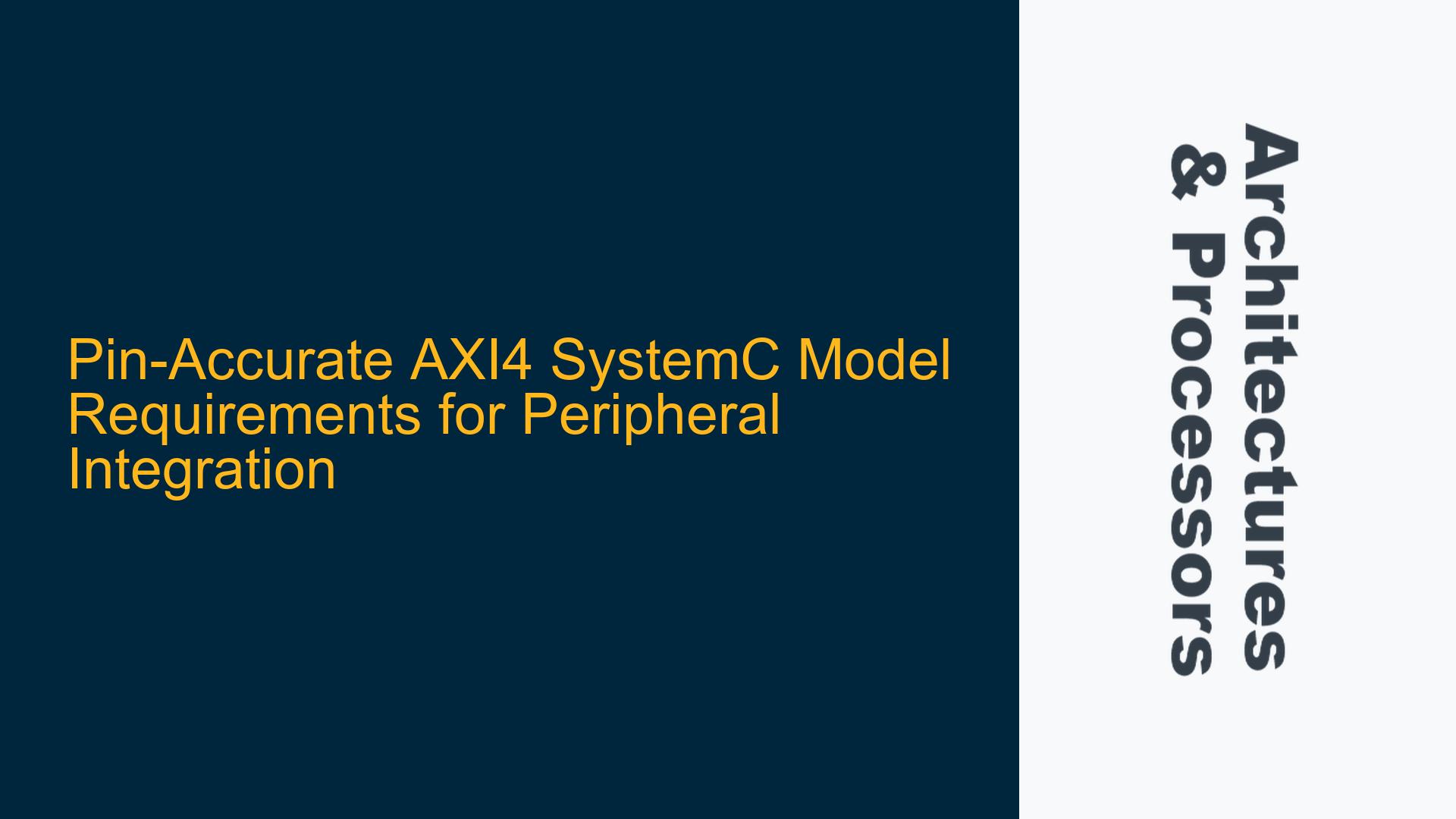Peripheral Integration Challenges with AXI4 SystemC Models
When integrating a peripheral into an ARM-based SoC, one of the critical requirements is the availability of a pin-accurate and bit-accurate AXI4 SystemC model. The AXI4 protocol, part of the ARM AMBA specification, is widely used for high-performance on-chip communication. However, creating or sourcing a SystemC model that accurately reflects the AXI4 interface’s behavior at the pin and bit level can be challenging. This is particularly important when the peripheral needs to interact with other components in the SoC, such as CPUs, memory controllers, or other peripherals, through the AXI4 bus.
The AXI4 protocol defines a set of signals and transactions that must be precisely modeled to ensure correct functionality. These include address channels, data channels, and control signals, each with specific timing and protocol requirements. A pin-accurate model must replicate these signals exactly as they would appear in the actual hardware, including signal widths, timing relationships, and protocol compliance. A bit-accurate model, on the other hand, must ensure that the data transmitted and received on these signals is exactly as expected, including correct handling of burst transactions, out-of-order transactions, and other advanced AXI4 features.
The absence of a pin-accurate and bit-accurate AXI4 SystemC model can lead to significant integration issues. For example, if the model does not correctly replicate the AXI4 protocol’s timing requirements, it may cause timing violations in the SoC, leading to functional failures. Similarly, if the model does not accurately represent the data transactions, it may result in data corruption or incorrect behavior in the peripheral or other components connected to the AXI4 bus.
Lack of Standardized AXI4 SystemC Models in the Ecosystem
One of the primary reasons for the difficulty in finding a pin-accurate and bit-accurate AXI4 SystemC model is the lack of standardized models in the ecosystem. Unlike other protocols such as OCP (Open Core Protocol), which have well-defined and widely available SystemC models, the AXI4 protocol does not have a similar level of support. This is partly due to the complexity of the AXI4 protocol, which includes advanced features such as multiple outstanding transactions, out-of-order completion, and support for different burst types.
ARM, the creator of the AXI4 protocol, does provide some SystemC models as part of its AMBA Design Kit (ADK). However, these models are often high-level and may not be pin-accurate or bit-accurate. They are typically intended for system-level simulation and may not be suitable for detailed verification of peripheral integration. Additionally, these models may not be freely available and may require a license, which can be a barrier for some developers.
Third-party vendors do offer AXI4 SystemC models, but the quality and accuracy of these models can vary significantly. Some vendors may provide models that are close to pin-accurate and bit-accurate, while others may only offer high-level abstractions. The cost of these models can also be a factor, as they may be expensive, especially for small teams or individual developers.
The open-source community is another potential source of AXI4 SystemC models. However, the availability of high-quality, pin-accurate, and bit-accurate models in the open-source domain is limited. Many open-source models are either incomplete, not fully compliant with the AXI4 specification, or lack the necessary documentation and support. This makes it difficult to rely on open-source models for critical peripheral integration tasks.
Strategies for Obtaining or Developing AXI4 SystemC Models
Given the challenges in finding a suitable AXI4 SystemC model, there are several strategies that can be employed to obtain or develop a pin-accurate and bit-accurate model. These strategies include leveraging existing models, developing custom models, and using verification tools to ensure accuracy.
One approach is to start with the SystemC models provided by ARM as part of the AMBA Design Kit (ADK). While these models may not be fully pin-accurate or bit-accurate, they can serve as a starting point for further development. By modifying and extending these models, it is possible to achieve the required level of accuracy. This approach requires a deep understanding of the AXI4 protocol and the ability to work with SystemC, but it can be a cost-effective solution for teams with the necessary expertise.
Another approach is to develop a custom AXI4 SystemC model from scratch. This involves creating a model that precisely replicates the AXI4 protocol’s signals and transactions, including all the timing and protocol requirements. Developing a custom model requires a significant investment of time and resources, but it allows for complete control over the model’s accuracy and functionality. This approach is particularly suitable for teams that require a high level of customization or have specific requirements that are not met by existing models.
Verification tools can also play a crucial role in ensuring the accuracy of an AXI4 SystemC model. Tools such as UVM (Universal Verification Methodology) can be used to create testbenches that verify the model’s compliance with the AXI4 specification. These testbenches can include checks for signal timing, protocol compliance, and data accuracy, ensuring that the model behaves as expected in all scenarios. Additionally, formal verification tools can be used to mathematically prove that the model adheres to the AXI4 specification, providing a high level of confidence in its accuracy.
In conclusion, obtaining or developing a pin-accurate and bit-accurate AXI4 SystemC






